- Choosing the Right Carrot Variety
- Preparing the Soil for Planting
- 1. Testing the Soil
- 2. Clearing the Area
- 3. Amending the Soil
- 4. Loosening the Soil
- 5. Removing Stones and Clumps
- 6. Raking the Soil
- 7. Mulching the Soil
- 8. Watering the Soil
- 9. Delaying Planting
- 10. Marking the Rows
- 11. Creating a Planting Furrow
- 12. Seeding the Carrots
- 13. Watering after Planting
- 14. Protecting from Frost
- 15. Maintaining Moisture
- 16. Mulching for Winter
- Seed Selection and Germination
- Variety
- Seed Quality
- Germination Requirements
- Planting and Transplanting
- 1. Choosing the Right Variety
- 2. Preparing the Soil
- 3. Planting Carrots
- 4. Transplanting Carrots
- 5. Proper Spacing
- 6. Watering and Care
- 7. Harvesting
- Proper Watering and Fertilization Techniques
- Watering Techniques
- Fertilization Techniques
- Fertilizer Types
- Pest and Disease Control
- Pests
- Diseases
- Harvesting and Storing Carrots
- 1. Timing
- 2. Loosening the Soil
- 3. Pulling the Carrots
- 4. Removing Tops
- 5. Cleaning and Drying
- 6. Storage Options
- 7. Checking for Spoilage
- “Question-Answer”
- What are some tips for planting carrots for winter?
- Can I plant carrots in the winter?
- How can I protect carrots from frost?
- What carrot varieties are best for winter planting?
- Do I need to water my carrots during winter?
- Can I plant carrots in containers for winter?
- When should I harvest winter carrots?
- “Video” Growing Carrots From Discarded Stems Super Fast, Efficient, High Yield
Preparing for winter is an essential part of any gardener’s routine, and planting carrots for winter can provide a fresh and nutritious harvest throughout the colder months. With the right techniques and timing, you can enjoy a bountiful supply of carrots even when the ground is covered in snow. In this comprehensive guide, we will walk you through the process of planting carrots for winter in 2022, from selecting the right carrot varieties to ensuring proper soil preparation and protection.
Choosing the right carrot varieties is crucial when planning for a winter harvest. Look for varieties that are specifically bred for winter growing, such as ‘Autumn King’ or ‘Napoli’. These varieties are known for their excellent cold tolerance and ability to withstand frost. Additionally, consider selecting varieties with a shorter maturity period, as they will have a better chance of reaching harvest size before the ground freezes.
Proper soil preparation is key to successful winter carrot planting. Carrots prefer well-drained, loamy soil enriched with organic matter. Begin by clearing the planting area of any weeds or debris and loosening the soil with a garden fork or tiller. Mix in compost or well-rotted manure to improve the soil’s fertility and drainage. Avoid using freshly manured soil, as it may cause misshapen or forked carrots.
Protecting your winter carrot crop from extreme temperatures and frost is vital for a successful harvest. Start by covering the planting area with a layer of mulch, such as straw or leaves, to insulate the soil and prevent it from freezing solid. Consider using row covers or cloches to provide additional protection from frost. These covers can be removed during milder periods to allow for sunlight and airflow.
Remember to monitor soil moisture levels throughout the winter months. While carrots require less water during this time, it’s important to keep the soil slightly moist to prevent the roots from drying out. Be mindful not to overwater, as excessive moisture can lead to rotting or disease.
By following these guidelines and putting in the necessary effort, you can enjoy a plentiful supply of fresh, homegrown carrots throughout the winter. Whether you plan to use them in soups, stews, or simply enjoy them as a crunchy snack, winter carrots are a rewarding addition to any winter garden. Start planning and planting now to ensure a successful winter harvest in 2022.
Choosing the Right Carrot Variety
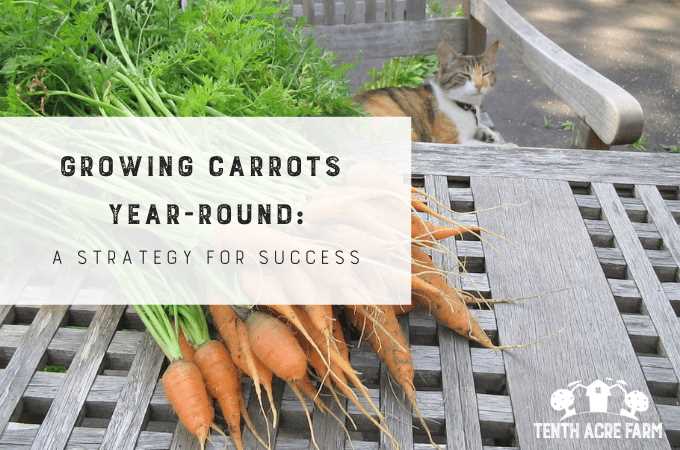
When it comes to choosing the right carrot variety for winter planting, there are a few factors to consider. Different carrot varieties have different characteristics such as size, shape, color, and flavor. Here are some tips to help you choose the right carrot variety:
- Growing Season: Consider the length of your growing season. Some carrot varieties are suited for shorter growing seasons, while others require a longer time to mature. Make sure to check the days to maturity listed on the seed packet and choose a variety that fits within your growing season.
- Climate: Carrots are cool-season vegetables, but some varieties are more cold-tolerant than others. If you live in a region with harsh winters, look for carrot varieties that are known for their cold tolerance.
- Size and Shape: Carrots come in a range of sizes and shapes. Some are short and stout, while others are long and slender. Consider your preferences and how you plan to use the carrots in your winter recipes.
- Color: Carrots can be orange, purple, white, yellow, or even multicolored. Choose a carrot variety with a color that appeals to you or suits the aesthetic of your winter garden.
- Flavor: Carrot flavors can vary from sweet to earthy. Some varieties are sweeter, while others have a more pronounced flavor. Consider the flavor profile you prefer when selecting a carrot variety.
- Storage: Some carrot varieties are known for their excellent storage qualities, allowing you to enjoy fresh carrots throughout the winter months. If you’re planning to store carrots for an extended period, choose a variety that has good storage capabilities.
Once you’ve considered these factors, you’ll be able to choose the right carrot variety for your winter planting. Remember to read the seed packet or consult with a local gardening expert for more specific information on each variety’s characteristics and requirements.
Preparing the Soil for Planting
1. Testing the Soil
Before planting carrots for the winter, it is important to test the soil to determine its pH level and nutrient content. This will help you make any necessary amendments and ensure that the soil is suitable for growing carrots.
2. Clearing the Area
Clear the area where you plan to plant your carrots. Remove any weeds, rocks, or debris that may hinder the growth of your plants. It is important to have a clean and clear planting area to give your carrots the best chance of growing successfully.
3. Amending the Soil
Based on the results of the soil test, you may need to amend the soil with organic matter or a fertilizer to provide the necessary nutrients for your carrots. Organic matter like compost or well-rotted manure can improve soil structure and fertility, while a balanced fertilizer can provide essential nutrients.
4. Loosening the Soil
Use a garden fork or a tiller to loosen the soil to a depth of about 8-12 inches. This will help improve drainage, aeration, and root penetration. Avoid working the soil while it is too wet to prevent compaction.
5. Removing Stones and Clumps
Remove any stones, clumps, or large debris from the soil. These can impede the growth of your carrots and cause misshapen roots.
6. Raking the Soil
Use a rake to create a smooth and level surface for planting. Raking will also help break up any remaining clumps and create a fine seedbed for your carrots.
7. Mulching the Soil
Consider applying a layer of organic mulch, such as straw or shredded leaves, to the soil surface after planting. Mulching helps to conserve moisture, prevent weed growth, and maintain more stable soil temperatures during the winter.
8. Watering the Soil
Before planting the carrot seeds, water the soil thoroughly to ensure it is evenly moist. This will provide a good environment for the germination and establishment of the seeds.
9. Delaying Planting
Consider delaying planting if the soil is still too warm or if frost is expected within a few weeks. Carrots prefer cool temperatures and can tolerate frost, but it is best to avoid extreme fluctuations in temperature during their germination and early growth stages.
10. Marking the Rows
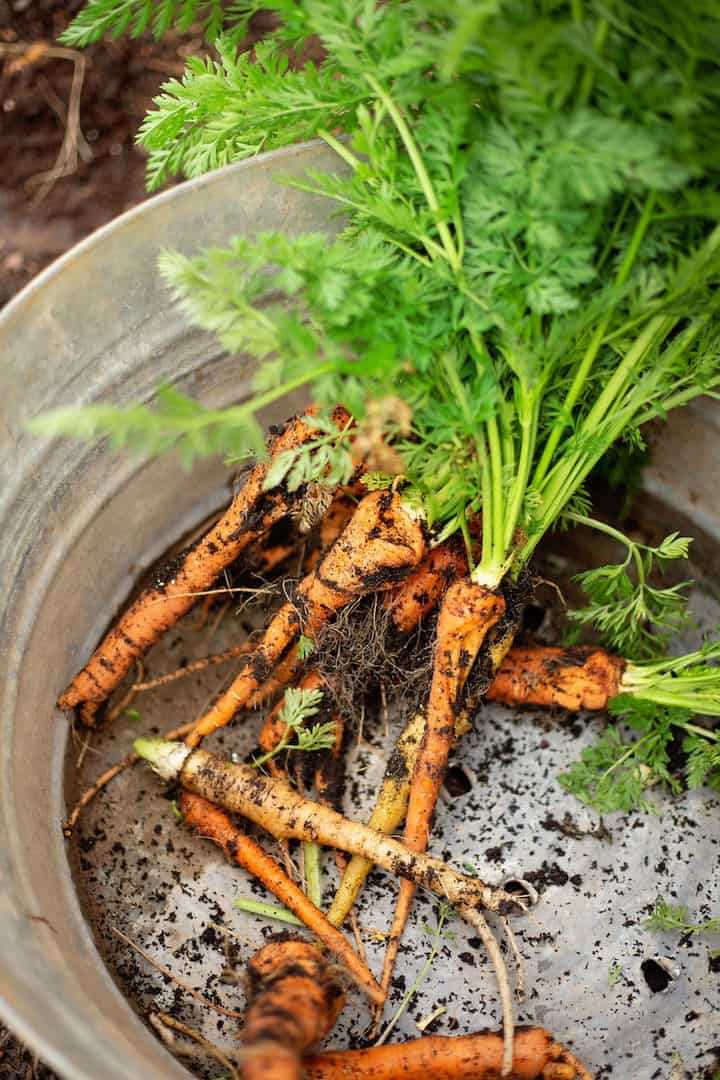
Use stakes or garden twine to mark the rows where you will be planting your carrots. This will help you keep track of where your carrots are planted and make it easier for future maintenance tasks, such as weeding and thinning.
11. Creating a Planting Furrow
Use a hoe or the edge of a garden rake to create a shallow furrow in the soil. The depth should be approximately 1/4 to 1/2 inch deep, depending on the variety of carrots you are planting.
12. Seeding the Carrots
Sow the carrot seeds thinly and evenly along the furrow. Aim for a spacing of about 1 to 2 inches between seeds. Cover the seeds with a light layer of soil and gently press down to ensure good seed-to-soil contact.
13. Watering after Planting
After planting the carrot seeds, water the soil again to provide moisture for germination. Be careful not to wash away the seeds or create puddles.
14. Protecting from Frost
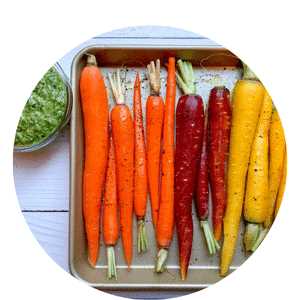
If frost is expected, consider covering the planted area with a frost blanket or floating row cover. This will provide some protection and help maintain more consistent soil temperatures.
15. Maintaining Moisture
Throughout the winter, monitor the moisture levels in the soil and water as needed. Keep in mind that winter rainfall may not provide sufficient moisture, so supplemental watering may be necessary.
16. Mulching for Winter
After the carrot seedlings have emerged and established, consider applying an additional layer of mulch around the plants. This will help insulate the soil, suppress weed growth, and provide additional protection against freezing temperatures.
Seed Selection and Germination
Choosing the right carrot seeds for winter planting is essential for a successful harvest. Here are some factors to consider when selecting seeds:
Variety
There are different varieties of carrots available, each with its own characteristics. Some varieties are better suited for winter planting due to their ability to tolerate cold temperatures and shorter daylight hours. Look for varieties specifically labeled as suitable for winter or cold climates.
Seed Quality
High-quality seeds are crucial for germination success. Select seeds from reputable companies or trusted sources to ensure their viability. Look for seeds that are plump, firm, and free from damage or signs of disease. If possible, choose seeds that have been specifically tested for germination rates.
Germination Requirements
Before planting the seeds, it is important to understand their germination requirements. Carrots prefer a cool soil temperature of around 50-75°F (10-24°C). Planting them in warmer temperatures may lead to poor germination. Additionally, carrots require consistent moisture for proper germination, so make sure to water the seeds regularly.
Here are a few steps to follow for successful germination:
- Prepare the soil by removing weeds and rocks.
- Loosen the soil to a depth of at least 8-10 inches (20-25 cm) using a garden fork or tiller.
- Create furrows or rows in the soil, spaced about 12-18 inches apart.
- Sow the seeds directly into the furrows, spacing them about 1/2 inch apart.
- Cover the seeds with a thin layer of soil, about 1/2 inch deep.
- Water the seeds gently to keep the soil consistently moist.
- Monitor the soil moisture and water as needed.
It is important to keep in mind that carrot seeds may take longer to germinate compared to other plants, often taking 10-14 days. Patience is key during this process.
By carefully selecting high-quality seeds and providing the correct germination conditions, you can increase the chances of a successful winter carrot harvest.
Planting and Transplanting
When it comes to planting and transplanting carrots for winter, there are a few key points to keep in mind:
1. Choosing the Right Variety
Carrots come in a variety of shapes, sizes, and colors. When selecting a variety for planting in winter, choose those that are cold-hardy and can tolerate frost. Some popular varieties for winter planting include “Bolero,” “Nantes,” and “Chantenay.”
2. Preparing the Soil
Before planting carrots, it is important to prepare the soil to ensure optimal growth. Start by removing any existing weeds and loosening the soil with a garden fork or tiller. Carrots prefer well-drained soil that is rich in organic matter, so consider adding compost or aged manure to improve the soil’s fertility.
3. Planting Carrots
Carrots can be directly sown into the ground or started indoors and transplanted outdoors. If sowing directly, create furrows about 1/4 to 1/2 inch deep and space them about 2 inches apart. Thinly sow the carrot seeds and cover them with a thin layer of soil. Water gently to ensure good seed-to-soil contact.
4. Transplanting Carrots
If starting carrots indoors, sow the seeds in biodegradable pots or trays filled with seed-starting mix. Keep the soil moist and warm until the seeds germinate. Once the seedlings have reached a height of 2-3 inches, they can be transplanted outdoors. Choose a cloudy day or transplant in the late afternoon to reduce stress on the plants.
5. Proper Spacing
Carrots need adequate space to grow and develop their roots. When thinning the seedlings or transplanting, ensure that each plant has enough space to grow. Space the carrots about 1-2 inches apart if thinning or transplanting seedlings. Leave enough space between rows to allow for easy access and airflow.
6. Watering and Care
Carrots require consistent moisture to ensure good root development. Water them regularly, especially during dry spells, but avoid overwatering as it can cause rotting. Mulching around the plants can help retain moisture in the soil and reduce weed growth. Regularly monitor for pests and diseases, and take appropriate measures to control them if necessary.
7. Harvesting
In colder regions, carrots can stay in the ground throughout the winter and be harvested as needed. However, if you live in a region with extremely cold temperatures, consider harvesting the carrots and storing them in a cool, dry place for winter use. Harvest the carrots when they have reached the desired size, usually around 2-3 months after planting.
Proper Watering and Fertilization Techniques
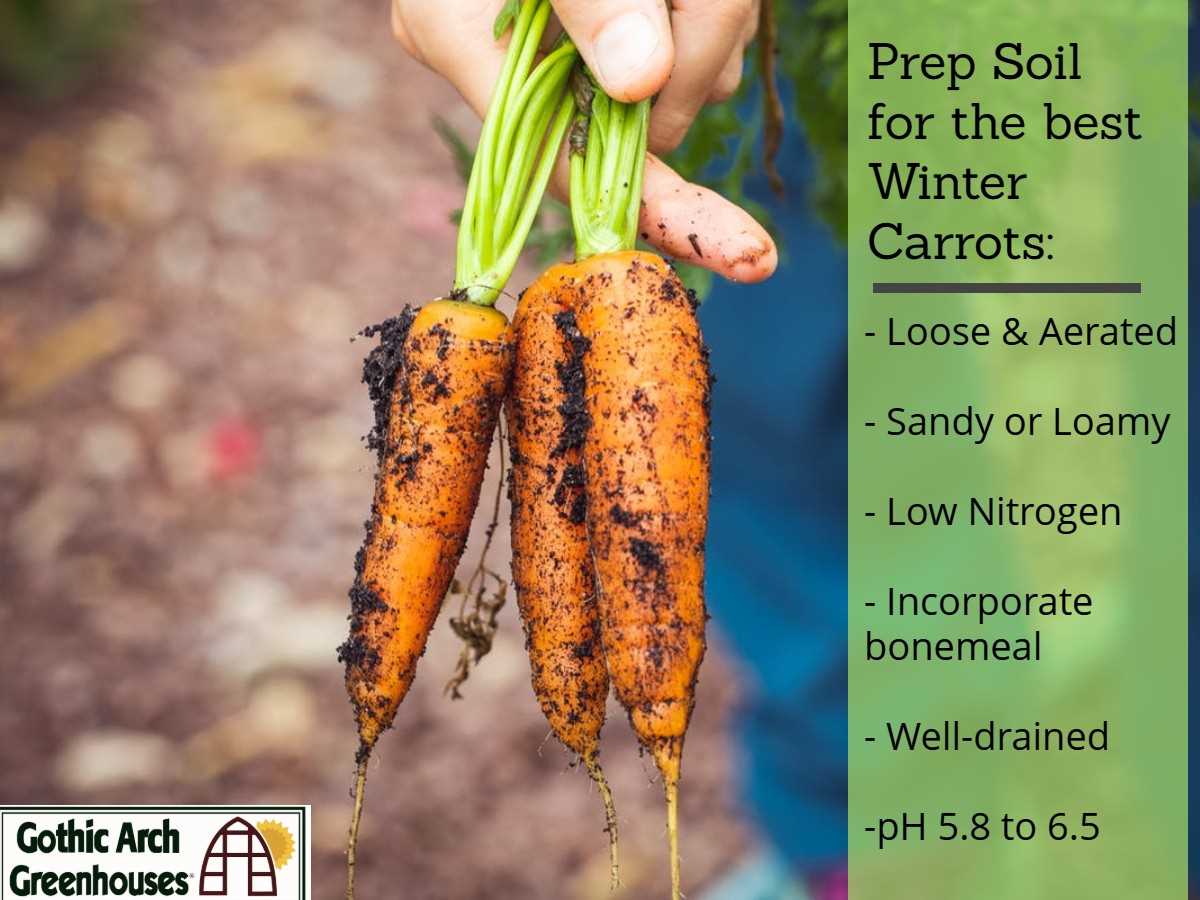
Proper watering and fertilization techniques are crucial for successfully growing winter carrots. These techniques help ensure that the carrots receive the necessary nutrients and moisture to grow healthy and robust.
Watering Techniques
Carrots require consistent and adequate moisture to develop properly. Here are some watering techniques to follow:
- Water the carrots regularly to keep the soil evenly moist.
- Avoid overwatering, as it can lead to root rot and other diseases.
- Water deeply, making sure the water reaches the root zone of the carrots.
- Avoid wetting the carrot foliage to prevent the development of foliar diseases.
- Use a watering can or drip irrigation system to deliver water directly to the soil, minimizing water waste.
Fertilization Techniques
Appropriate fertilization is essential for supplying carrots with essential nutrients. Consider the following fertilization techniques:
- Before planting, prepare the soil by incorporating well-rotted compost or aged manure.
- Test the soil to determine its nutrient levels and pH. Adjust the pH if necessary to optimize nutrient availability.
- Apply a balanced fertilizer with a ratio of nitrogen (N), phosphorus (P), and potassium (K), such as 10-10-10 or 14-14-14.
- Distribute the fertilizer evenly around the base of the carrot plants, taking care not to directly apply it to the foliage.
- Water the plants immediately after fertilizing to help nutrients reach the root zone.
Fertilizer Types
When choosing a fertilizer for carrot plants, consider the different types available:
| Fertilizer Type | Description |
|---|---|
| Organic Fertilizers | Derived from natural sources, such as compost, manure, or bone meal. They release nutrients slowly and improve soil health. |
| Inorganic Fertilizers | Synthetic fertilizers that contain specific ratios of nutrients. They provide quick-release nutrients but do not enhance soil health. |
| Natural Fertilizers | Derived from natural sources and approved for organic gardening. They provide slow-release nutrients and improve soil health. |
It is important to choose a fertilizer type that aligns with your gardening practices and goals.
By following these proper watering and fertilization techniques, you can ensure that your winter carrots have the best chance of thriving and providing you with a bountiful harvest.
Pest and Disease Control
Carrots can be susceptible to various pests and diseases, but with proper care and attention, you can keep them healthy and productive. Here are some common pests and diseases that affect carrots and ways to control them:
Pests
- Aphids: These small insects feed on the carrot leaves and can cause stunted growth. To control aphids, you can use insecticidal soap or neem oil spray.
- Carrot rust flies: The larvae of these flies can tunnel into the carrots, causing damage. Covering your plants with floating row covers can help prevent them from laying eggs on the plants.
- Wireworms: Wireworms are the larvae of click beetles and can feed on carrot roots. You can control wireworms by applying beneficial nematodes to the soil, which will attack and kill the larvae.
- Slugs: Slugs can chew on carrot leaves, leaving behind slime trails. To control slugs, you can set up slug traps or create barriers, such as copper tape, around your carrot bed.
Diseases
- Carrot blight: This fungal disease causes black lesions on the leaves and can spread to the roots. To control carrot blight, avoid overhead watering and ensure adequate spacing between plants for good airflow.
- Carrot canker: Carrot canker is a bacterial disease that causes dark sunken lesions on the roots. Planting disease-resistant carrot varieties and practicing crop rotation can help control carrot canker.
- Root knot nematodes: These microscopic worms feed on carrot roots, causing galls and deformations. Planting marigolds as a companion plant can help deter root knot nematodes.
- Carrot fly: Carrot flies are attracted to the scent of bruised carrots and can lay eggs on the plants. To control carrot fly, avoid bruising or damaging the foliage and use physical barriers, such as insect-proof mesh, to exclude the flies.
Regularly monitoring your carrot plants and promptly addressing any pest or disease issues will help ensure a successful winter carrot crop.
Harvesting and Storing Carrots
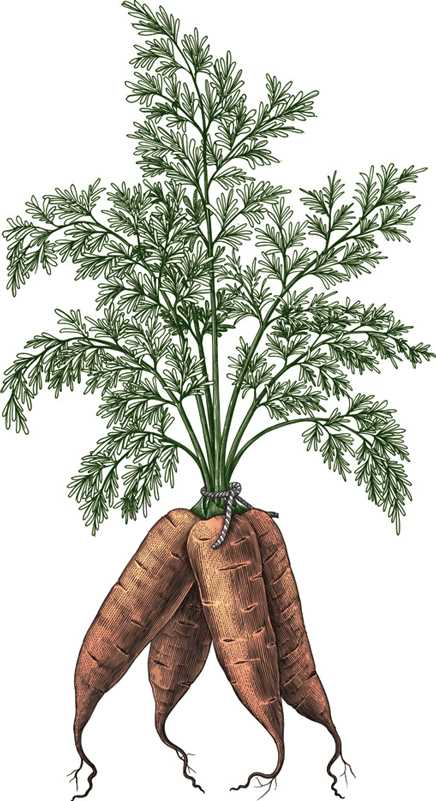
When it comes time to harvest your carrots, there are a few important steps to follow to ensure a successful and well-preserved crop. Here are some tips for harvesting and storing carrots:
1. Timing
Carrots can be harvested once they have reached a desirable size, usually around 60-75 days after planting. It’s important to monitor their growth and check the estimated harvest time for the specific variety you planted.
2. Loosening the Soil
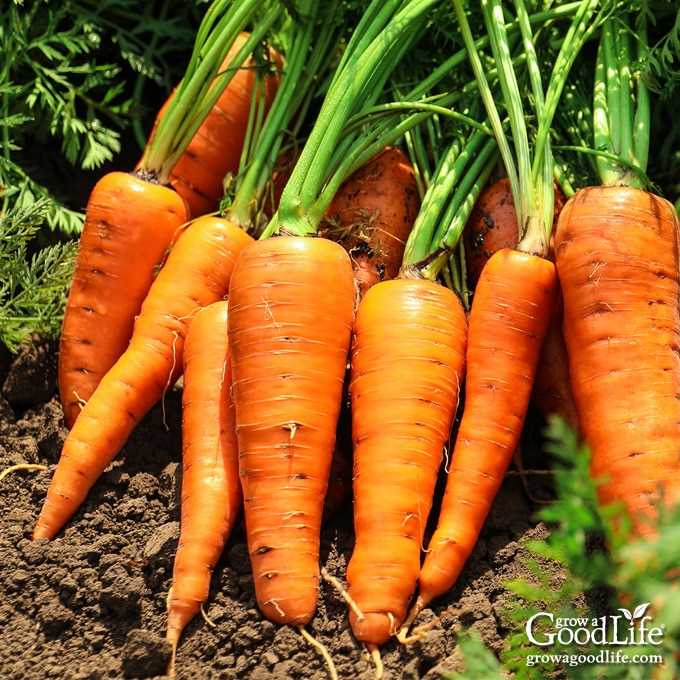
Before harvesting, gently loosen the soil around the carrot tops using a garden fork or shovel. This will make it easier to pull the carrots out without damaging them.
3. Pulling the Carrots
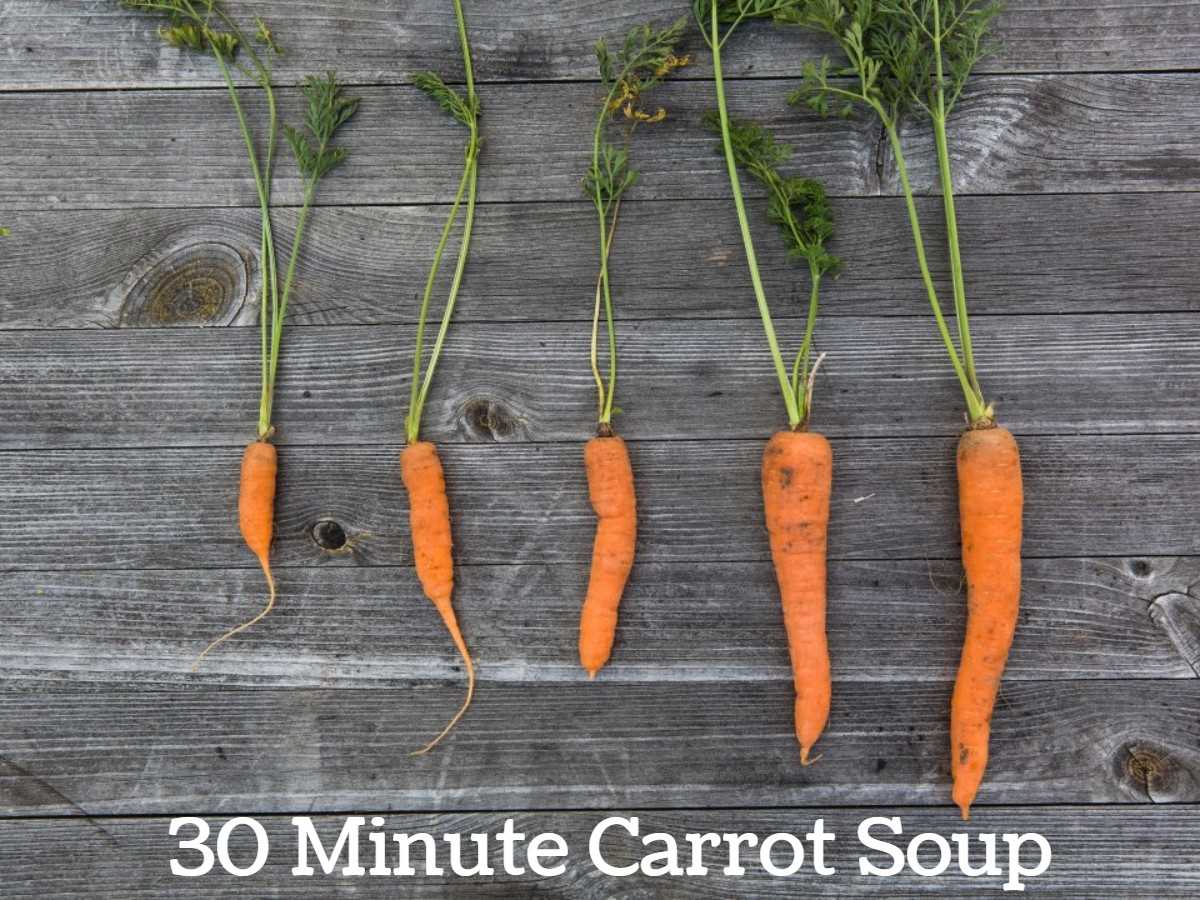
Grasp the carrot top near the base and firmly pull it upwards. If the carrots are resistant and difficult to pull out, you can use a garden fork to gently lift them out from the side.
4. Removing Tops
Once you have harvested the carrots, trim off the leafy tops, leaving about an inch of the green stem attached to the carrot. Removing the tops will help the carrots store longer and prevent them from taking moisture away from the roots.
5. Cleaning and Drying
Remove any excess soil from the harvested carrots by gently brushing or washing them. Allow the carrots to air dry for a few hours to remove any moisture before storing them.
6. Storage Options
There are several storage options for carrots:
- Refrigerator: Carrots can be stored in the refrigerator in a plastic bag or container. They can last for several weeks when stored properly.
- Root Cellar: If you have access to a root cellar, carrots can be stored in moist sand or sawdust at a temperature of around 32°F (0°C) with high humidity. This method can keep carrots fresh for several months.
- Canning: Carrots can be preserved by canning them in jars. This involves blanching the carrots, packing them into jars, and then processing them in a canner.
7. Checking for Spoilage
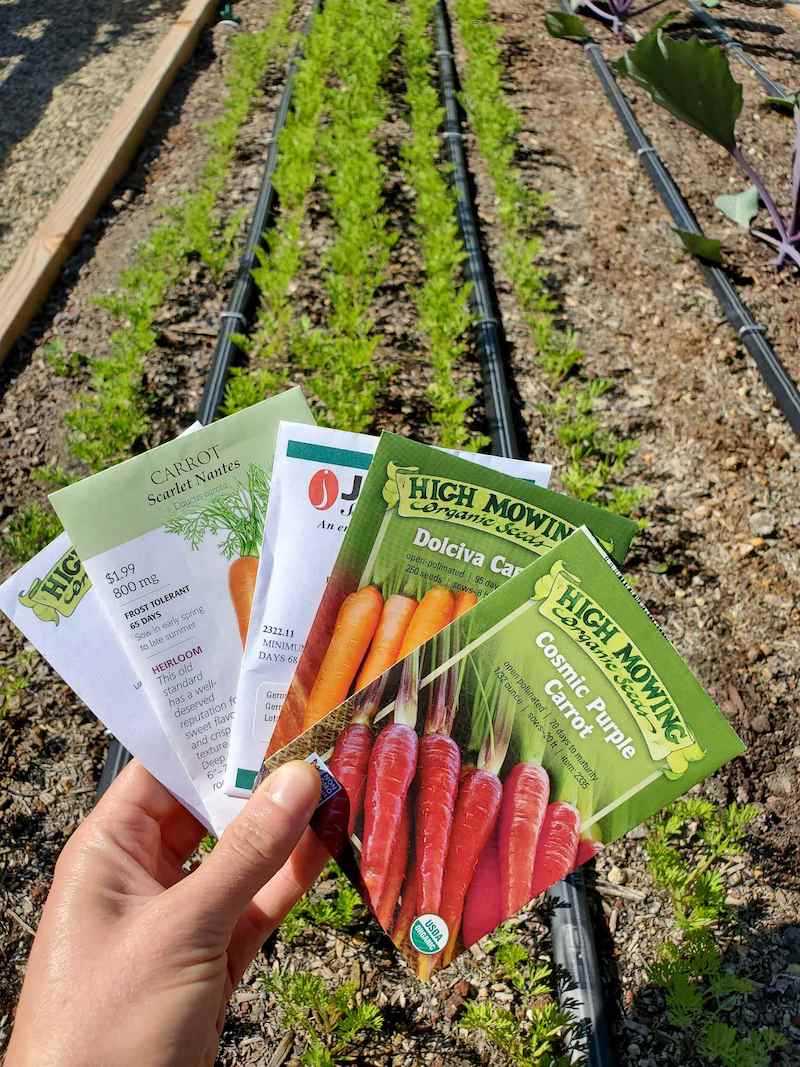
Regularly check stored carrots for any signs of spoilage, such as mold or rot. Remove any affected carrots immediately to prevent spoilage from spreading to the rest of the crop.
By following these steps, you can ensure a bountiful carrot harvest and enjoy homegrown carrots throughout the winter months.
“Question-Answer”
What are some tips for planting carrots for winter?
When planting carrots for winter, it’s important to choose the right carrot variety that is suitable for cold weather. Additionally, it’s best to plant carrots in raised beds or containers with well-draining soil. Carrots should be planted in late summer or early fall, about 10-12 weeks before the first frost. It’s also beneficial to mulch the carrot bed with straw or leaves to protect them from frost and maintain soil moisture. Regular watering is necessary, and it’s important to weed the carrot bed regularly. Finally, harvesting the carrots before the ground freezes completely is recommended.
Can I plant carrots in the winter?
Yes, you can plant carrots in the winter, but it requires some special considerations. Carrots can tolerate cold weather, but they need to be planted before the ground freezes completely. The best time to plant carrots for winter is late summer or early fall, about 10-12 weeks before the first frost. By planting at this time, the carrots will have enough time to grow before the frost sets in. It’s important to choose carrot varieties that are suitable for cold weather and provide them with proper care and protection during the winter months.
How can I protect carrots from frost?
There are several ways to protect carrots from frost. One method is to mulch the carrot bed with straw or leaves. This helps to insulate the soil and protect the carrots from freezing temperatures. Another option is to use row covers or cloches to create a barrier between the carrots and the cold weather. These covers can be removed during warmer days to allow the carrots to receive sunlight and air. Regular watering is also important, as dry soil can make the carrots more susceptible to frost damage. Finally, harvesting the carrots before the ground freezes completely can help ensure their survival.
What carrot varieties are best for winter planting?
There are several carrot varieties that are well-suited for winter planting. Some popular options include ‘Napoli’, ‘Sugarsnax’, ‘Mokum’, and ‘Bolero’. These varieties are known for their ability to tolerate cold weather and produce high-quality carrots. When choosing a variety, it’s important to consider your specific climate and growing conditions to ensure the best success. Additionally, look for carrot varieties that have a shorter maturity time, as they will have a better chance of maturing before the winter frost arrives.
Do I need to water my carrots during winter?
Yes, it’s important to water your carrots during winter, although the watering frequency may be reduced compared to the growing season. Carrots still need moisture to grow, even in cold weather. However, it’s important to avoid overwatering, as excessively wet soil can cause the carrots to rot. Aim to keep the soil slightly moist, but not saturated. It’s also a good idea to water the carrots during warmer periods, as the frozen ground can make it difficult for them to absorb moisture. Regularly checking the soil moisture and adjusting watering accordingly is key to maintaining healthy winter carrots.
Can I plant carrots in containers for winter?
Yes, you can plant carrots in containers for winter. In fact, planting carrots in containers can offer some advantages, such as better control over soil quality and drainage. When planting carrots in containers, choose a deep container with a minimum depth of 12 inches to allow the carrots to grow properly. Use a well-draining potting mix and make sure the containers have proper drainage holes. Carrots in containers may require more frequent watering compared to those planted in the ground, as containers tend to dry out faster. Providing proper care and protection, such as adding mulch and using covers during cold spells, will help ensure successful winter carrot cultivation in containers.
When should I harvest winter carrots?
The timing of the winter carrot harvest depends on the specific climate and growing conditions. Generally, it’s best to harvest the carrots before the ground freezes completely. However, if you live in a milder climate where the ground doesn’t freeze, you can harvest the carrots throughout the winter months as needed. It’s important to check the soil moisture and harvest the carrots when the soil is workable. Additionally, keep in mind that winter carrots tend to become sweeter after experiencing cold temperatures, so harvesting them during or after cold spells can result in more flavorful carrots.







